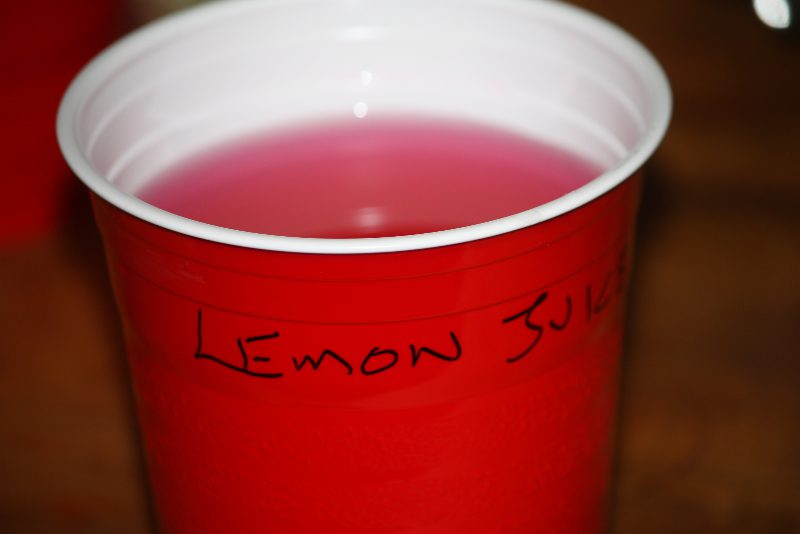Red Cabbage is high in a special type of flavonoid pigment known as anthocyanin. This gives red cabbage its characteristic purplish color, as well as being responsible for the blue in blueberries and the black in blackberries. It is also color reactive to pH and can be used to make a homemade pH color changing potion (or make denim eggs).

This anthocyanin solution will change color when exposed to acids or bases.
To extract anthocyanin from red cabbage leaves:
- Chop or shred a ½ head of red cabbage.
- Place leaves in a small pot with a cup of water.
- Bring to a boil, reduce heat to simmer for 20 minutes or until liquid is a deep purple.
- Strain the purple anthocyanin solution from the cabbage leaves.
To use:
- In a small cup or jar, pour in enough of the solution to cover the bottom of the cup, and then add a few drops of the liquid to be tested.
- Stir, and dilute with as much water as needed to see the color clearly. A dilute solution will be the same shade of color as a strong one, but the color won’t be as intense and therefore harder to see.
The liquid will change color according to pH. In order from lowest pH (most acidic) to highest (most basic) the colors are: red, pink, blue, the original shade of purple (unchanged), green, yellow, and clear.


Neutral (pH 7) is the purple starting color. Some common household bases and acids that can be tested (with care) are lye, bleach, baking soda, lemon juice, and vinegar. Be careful if using dangerous materials such as lye or bleach as both are damaging corrosive bases and skin contact should be avoided. Never mix bleach with an acid or it can release it’s chlorine as a (poisonous) gas.
Anthocyanin isn’t the only pH color changing substance. Litmus is collected from lichen, and turns red in low pH, and blue in high pH. Litmus can be applied to strips of paper to become “litmus paper”, a common method to test pH.
Color changing pH test kits use a similar principle with different pH reactive chemicals. The substance to be tested (such as a nutrient solution sample) is put in a vial, and a few drops of the test fluid is added. The vial is shaken, and the color compared to a chart of known values. Once the closest color is located, the corresponding pH value is read.
While the homemade red cabbage potion isn’t necessarily the best way to check pH, it makes for a fun experiment and demonstration of pH in action.